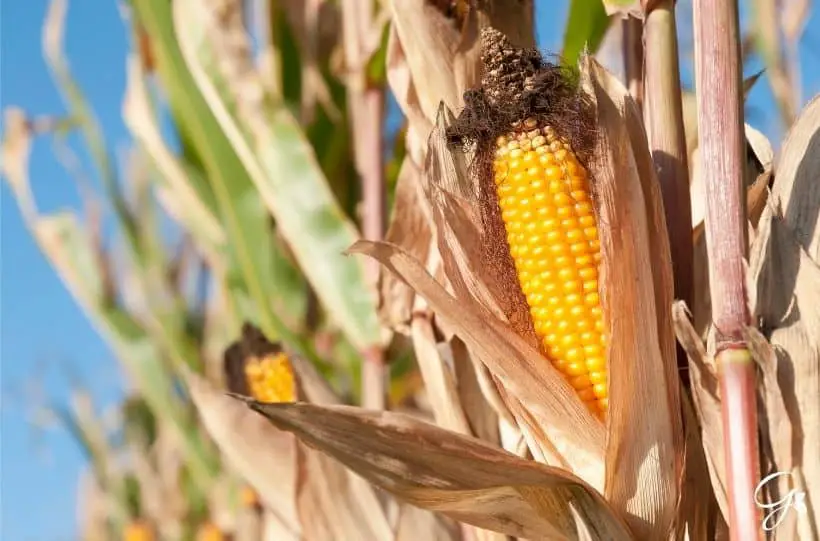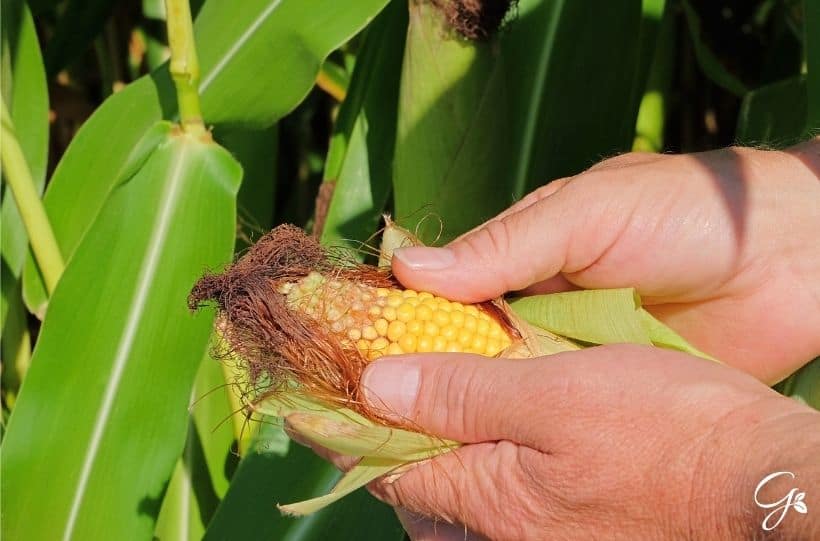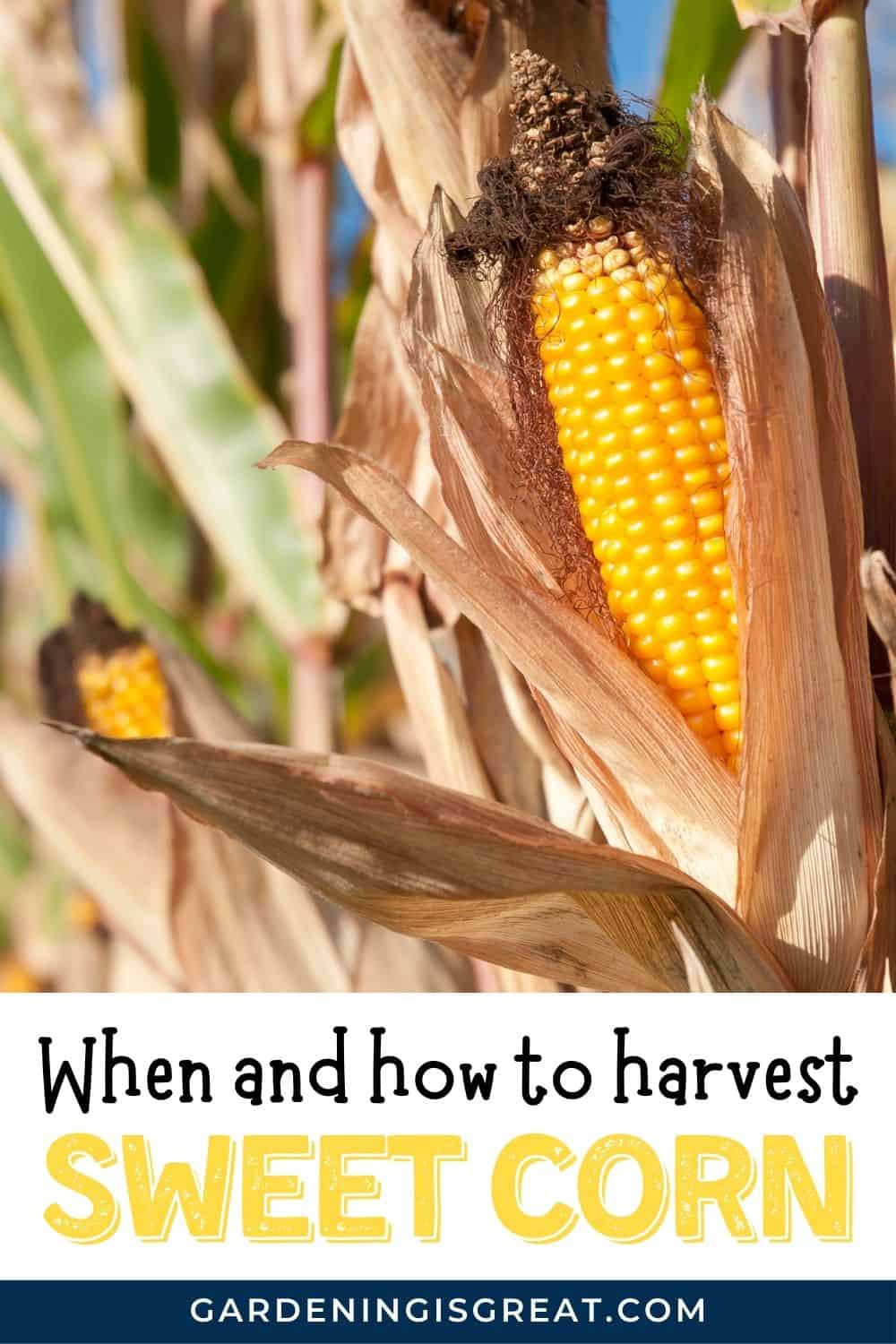Harvesting Sweet Corn: When And How To Harvest Sweet Corn
Sweet corn is a delicious vegetable but is often consumed as a tasty snack due to its sweetness, especially after being boiled and topped with butter!
But, sweet corn tastes even better when grown in your own back garden compared with purchasing at the supermarket.
You can eat home-grown sweet corn straight from being harvested and because it hasn’t been processed or stored, it’s even sweeter in flavor!
To get your sweet corn flavor just right, you need to know when and how to harvest sweet corn. There is an ideal time and method for harvesting sweet corn that we will share in this post so you can have the best tasting sweetcorn directly from your backyard.

When To Harvest Sweet Corn
There is an ideal time to harvest sweet corn. Too early, and it won’t be as sweet as it should and may even be quite hard in texture. If you are too late, the kernels will lose all sweetness, turn starchy and be tough to chew.
Before harvesting sweet corn, you need to test if the liquid inside the kernels is of the right consistency.
First, the leaves around your sweet corn, known as husks, should be light green in color and the silk or “tassles” growing out of the top will have turned brown. This is a good indication that your kernels might be ready.
Next, gently peel back a small section of the husks from the top so you can access a few of the kernels. Then, pierce a kernel with a knife or your fingernail so that the liquid seeps out.
If your sweet corn is ready to be harvested, the liquid will be a milky color. However, if the liquid is still clear, your corn is not ready. Carefully place the husks back so that they surround your corn and leave for a few more days before checking again.
If there is no liquid, then it’s too late and your sweet corn has passed the sweet stage and will now be starchy.


Top Tip: Some stalks will grow more than one ear/husk with the usual ear at the top of the stalk and a second, smaller ear growing lower down. If this is the case, they will not need harvesting at the same time.
Lower ears will have begun growing after the top ear and so will be later in maturing. Once your top ear has been harvested, return in a few days to check if the bottom ear is ready.
How To Harvest Sweet Corn By Hand
When your kernels are full of a milky liquid, it is time to harvest your sweet corn. Many gardeners suggest starting boiling water in a pan before harvesting your corn. This is because as soon as your corn has been harvested, it begins to lose its sweetness. This way, when you harvest your corn, you can place it straight into the pan to cook and preserve its sweetness.
To harvest sweet corn, firmly grip the ear and twist as you pull downwards to help it break away from the stalk. It is best to harvest in stages so that you only harvest what you can consume over the next few days to maximize that fresh, sweet taste.
However, you do need to keep in mind that sweet corn needs to be fully harvested whilst in the milky stage. If you have more ears than you can consume within a week, you can preserve them to consume at a later date.
Harvest all of your sweet corn and boil them in hot water. Then, either store as is or cut the sweet corn kernels off the cob for easier storing. They can then be placed in the fridge for up to one week or can be frozen.

How To Harvest Sweet Corn For The Seed
If you are hoping to plant corn the following year from your current plants, then you need to ensure to not harvest all of your cobs.
Leave some ears attached to the stalks and leave for a couple more weeks. For your seeds to be successful, they need to completely dry out. Leaving your corn a couple of weeks after it should have been harvested for consumption, allows it time for the milky liquid to disappear and for your seeds to start drying.
After a few weeks, remove the ears. Peel away the husk slightly to see how dry your seeds are. If the corn isn’t dry and crispy yet, leave it in an area that is cool and dry to continue drying. When the corn seeds are ready, they will be brown and completely dry.
Once your seeds are ready, remove them from the cob and store them in a cool, dry place indoors. Do not cover in an airtight container as this can lead to moisture buildup and your seeds need to remain dry.
Your seeds can then be sown directly outdoors in late spring to start growing corn again.
What To Do With Sweet Corn Stalks After Harvesting
Once the sweet corn harvest is over and you have saved your corn seeds for the following growing season, it might be time to take down your sweet corn stalks.
As they are an annual plant, you will need to dig up the whole plant from your garden, ensuring you have dug up the roots too.
Your sweet corn stalks can be cut into smaller pieces and added to your compost ready to use for plants in the following spring.
If however, you have planted companion plants alongside your corn that have not yet been harvested, it might be best to wait to dig up your corn plants.
Plants such as pole beans rely on corn for support. Digging up your corn plants can damage your other crops. Wait until all of your crops growing together with your corn have been harvested and then you can dig up each annual plant after.
Following these top tips of how and when to harvest your sweet corn will lead to you having a successful, tasty supply of corn. But also enable you to preserve corn seeds for the following year and provide additional compost for your spring plants too.
For more growing tips, take a look at our other posts to help you grow vegetables in your garden:
- How to Grow Kale in your Garden
- How to Plant and Grow Asparagus
- 8 Vegetables to Plant in Autumn
- How to Grow Lemon Cucumbers in a Vegetable Garden


